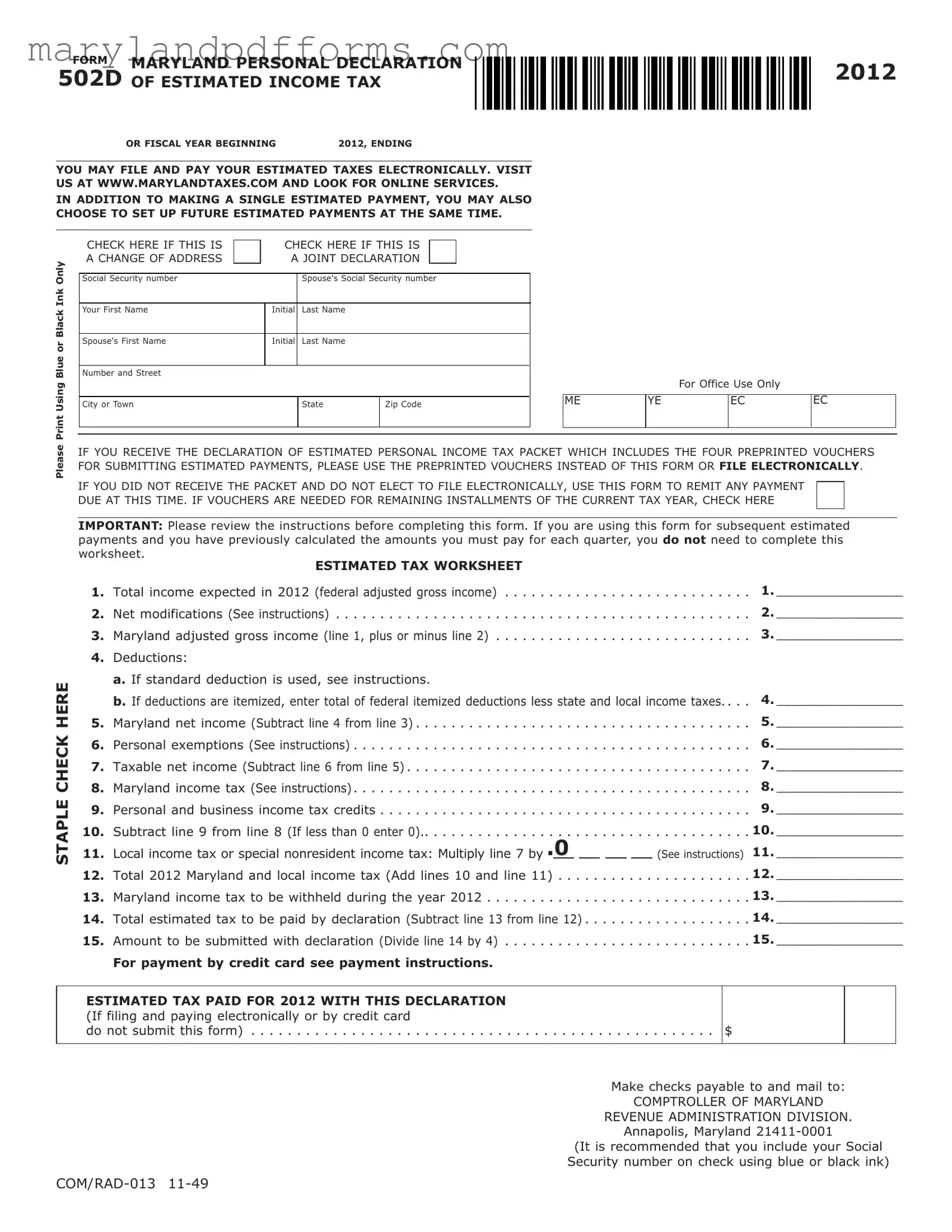The Maryland 502D form is used to declare estimated income tax for the state of Maryland. It is part of the pay-as-you-go tax system, which requires individuals to pay taxes on income as it is earned. If you receive income such as pensions, business income, or lottery winnings without tax withheld, you may need to file this form. This ensures that you stay compliant with Maryland tax laws and avoid penalties.
You must file the 502D form if you expect to owe more than $500 in Maryland income tax after accounting for withholding. This includes income from various sources where no tax has been withheld. Additionally, if you receive substantial income from awards or prizes, you must file within 60 days of receiving that income. Couples can file jointly using this form if they choose.
When are payments due for the estimated tax?
Payments for the estimated tax are due in four installments. The first payment must be made by April 15, 2012. The remaining payments are due on June 15, September 15, and January 15 of the following year. If you prefer, you can pay the total estimated tax amount with your first payment. For those on a fiscal year, payment deadlines will align with the 15th day of the 4th, 6th, 9th, and 13th months after the fiscal year begins.
The form includes a worksheet to help you estimate your tax liability. Start by calculating your total expected income for the year, then adjust for any modifications. After determining your Maryland adjusted gross income, you can apply deductions and exemptions to find your taxable net income. Finally, use the tax rate schedules provided to calculate the total tax owed. Ensure you estimate as accurately as possible to avoid penalties.
What happens if I overpay my taxes?
If you overpaid your previous year's taxes, you may apply that overpayment to your current estimated tax liability. If the overpayment covers your first quarterly payment, you do not need to file the 502D form. However, if it does not cover the full amount, you must file the form and pay the remaining balance. Preprinted vouchers will be sent for subsequent payments if needed.
